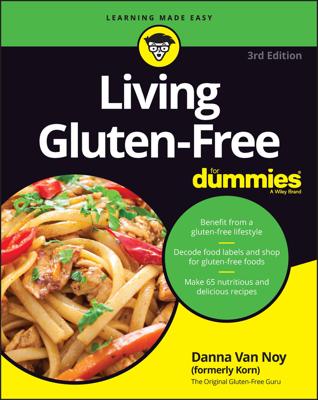Even if you weren’t cooking gluten-free, you’d want to give these gluten-free ingredients a go. Not only are these gluten-free grains acceptable substitutes for the traditional grains like wheat, rye, and barley, but these gluten-free puppies also offer unique characteristics:
Amaranth: Amaranth is an excellent source of protein and has a pleasant peppery and nutty flavor.
Arrowroot: With a look and texture similar to cornstarch, arrowroot makes a great substitute for cornstarch.
Buckwheat: Buckwheat (shown in this figure) is actually a fruit (and is also known as groats and kasha).
Garfava: Garfava is the name of a commercial blend of chickpea (garbanzo beans) and fava bean flours made by a company called Authentic Foods.
Job’s Tears: A tall, tropical plant that produces a grain that’s gluten-free, often dried and cooked as a grain like rice or barley.
Mesquite: A plant that produces bean pods which can be dried and ground into flour. It adds a sweet, nutty taste that bears a hint of molasses.
Millet: Actually a grass — with a small seed that grows in a variety of shapes, sizes, and colors.
Montina (Indian ricegrass): Montina is actually a trademarked name by a company called Amazing Grains. Montina is a type of flour made from Indian ricegrass.
Quinoa (hie): A fruit, not a grain. Quinoa flours and pastas are available.
Ragi: Especially valuable nutrient-wise because it has the amino acid methionine.
Rice: A common staple in the gluten-free diet (see this figure).
Sorghum: Also known as milo, this gluten-free insoluble fiber’s bland flavor and light color don’t change the taste or look of foods when it’s used instead of wheat flour.
Soy: Actually a legume, not a grain. It’s commonly used in the gluten-free diet.
Tapioca: This flour is used in a lot of gluten-free recipes. Because it’s flavorless, tapioca flour or starch makes a great thickener.
Teff: Actually a grass with a seed that looks (and cooks) a lot like quinoa and millet, but it’s smaller.

